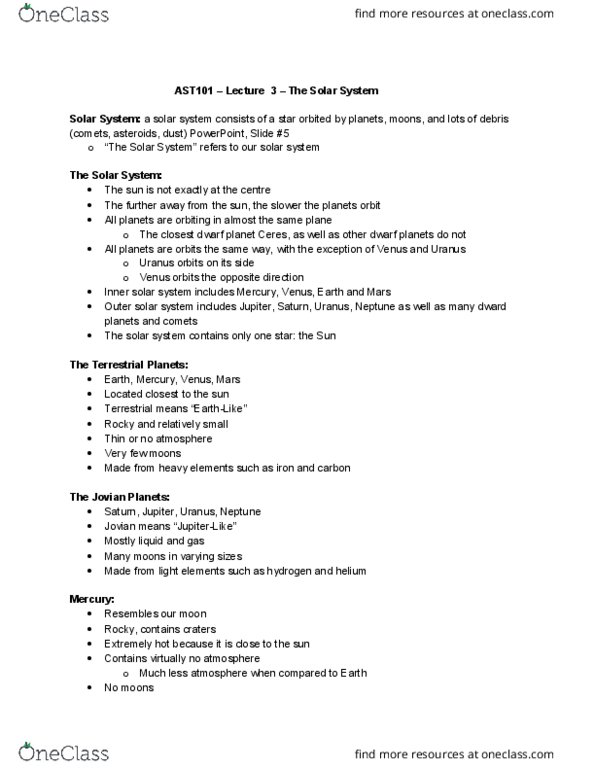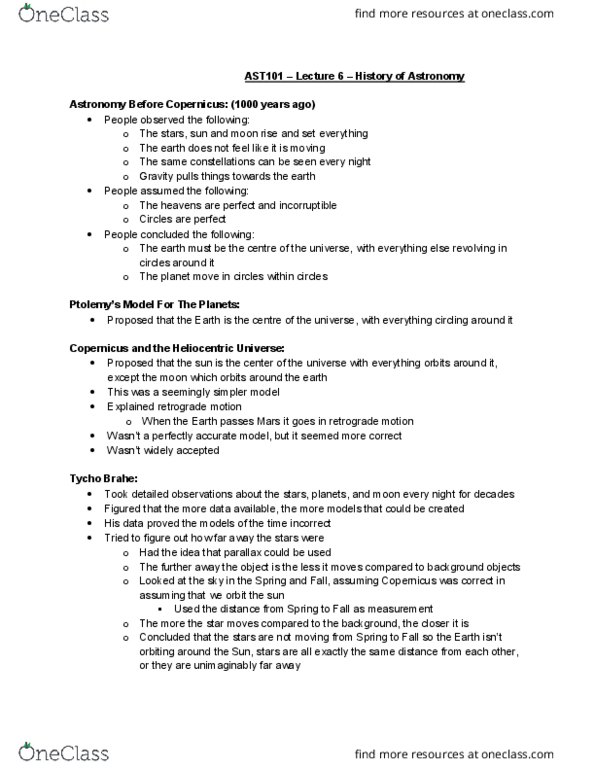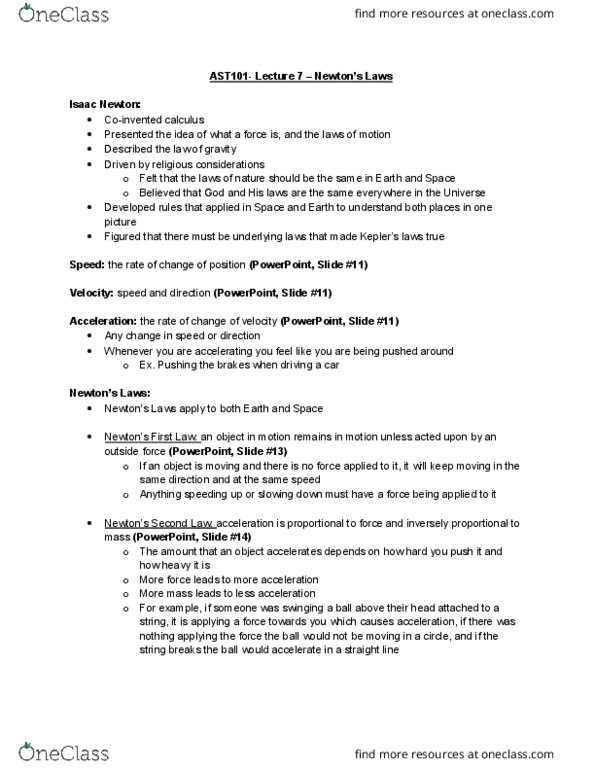AST101H1 Lecture Notes - Lecture 3: Olympus Mons, Mount Everest, Oort Cloud
AST101H1 verified notes
3/26View all
Document Summary
Ast101 lecture 3 the solar system. Solar system: a solar system consists of a star orbited by planets, moons, and lots of debris (comets, asteroids, dust) powerpoint, slide #5. The solar system refers to our solar system. Inner solar system includes mercury, venus, earth and mars: outer solar system includes jupiter, saturn, uranus, neptune as well as many dward planets and comets, the solar system contains only one star: the sun. The terrestrial planets: earth, mercury, venus, mars, located closest to the sun, terrestrial means earth-like , rocky and relatively small, thin or no atmosphere, very few moons, made from heavy elements such as iron and carbon. The jovian planets: saturn, jupiter, uranus, neptune, jovian means jupiter-like , mostly liquid and gas, many moons in varying sizes, made from light elements such as hydrogen and helium. 170 degrees celsius when facing away from the sun place in the past.





